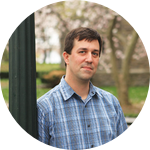About This Project
Ask the Scientists
Join The DiscussionWhat is the context of this research?
We seek to develop a micro-optical sensor platform for the detection of viral agents. In particular, we will focus on the human papillomavirus (HPV), which has been implicated in both cervical cancer and head & neck cancer. The goal is to expand on the work presently being performed in the lab and provide support for an undergraduate research student. The supported student will develop the whispering gallery mode platform that will enable sensitive detection of HPV. The sensor works by coupling light into a long-lived resonant mode of a micro-optical cavity. The adsorption of material to the surface perturbs the system and shifts the resonant wavelength. The degree to which the resonance shifts in indicative of the amount of material adsorbed on the surface. Ultimately this platform may be developed into a robust, low-cost and portable instrument that may be employed for screening for HPV infections throughout the world, particularly in underdeveloped and developing nations. HPV is the initial target because of the relationship we have developed with the Biology Department, but we intend to broaden the scope to include other cancers as well.
What is the significance of this project?
The long term goal of this research is to develop rapid and lost cost detection of HPV. However, this short term goal of this project will provide an undergraduate student with summer support so they can devote their time to gaining valuable laboratory experience, putting to practice those concepts they have learned in the classroom. This hands on learning in as important, if not more, as traditional classroom learning. In addition, this project will solidify the link between researchers within the Physics and Biology departments fostering future projects that combine techniques and approaches not typically employed by either department's researchers individually. Successful funding of this project will advance the research in the lab while enhancing the education experience for our students, and will ultimately bring us closer to realizing the goals.
What are the goals of the project?
The funds will be used entirely to support undergraduate students performing the research over the summer. For every $5000 raised, I will be able to offer a summer research opportunity to one of our undergraduate students. Any funds not used to support student researchers will be channeled into the lab for materials and supplies. Not a single penny will be used to pay my salary.
Budget
The entire budget will be used to support undergraduate research assistants. I'm looking for a single researcher, but would be able to employ additional students if funding permitted. Any funds in excess of the cost of an undergraduate research assistant would be used to purchase materials and supplies for the laboratory. Not a single penny of the funds will go to support my salary.
Meet the Team
Affiliates
Team Bio
Prof. Holler received a B.S. in Physics from Polytechnic University in Brooklyn, NY. He went to graduate school at Yale University, earning a Ph.D. in Applied Physics. After graduate school he worked for a couple of years at Los Gatos Research in Mountain View, CA on laser-based technology. Prof. Holler left LGR to join the Lasers, Optics and Remote Sensing Department at Sandia National Laboratories in Albuquerque, NM. The entrepreneurial bug was too strong and he spent only a short time at Sandia before returning to California in 2003 as Director of R&D for NovaWave Technologies (NWT), a start-up dedicated to developing laser-based sensor systems. NWT was acquired in 2010 by ThermoFisher Scientific. Prof. Holler left industry in 2011 to join the faculty of Fordham University in the Department of Physics and Engineering Physics.Stephen Holler
Prof. Holler received a B.S. in Physics from Polytechnic University in Brooklyn, NY. He went to graduate school at Yale University, earning a Ph.D. in Applied Physics. After graduate school he worked for a couple of years at Los Gatos Research in Mountain View, CA on laser-based technology. Prof. Holler left LGR to join the Lasers, Optics and Remote Sensing Department at Sandia National Laboratories in Albuquerque, NM. The entrepreneurial bug was too strong and he spent only a short time at Sandia before returning to California in 2003 as Director of R&D for NovaWave Technologies (NWT), a start-up dedicated to developing laser-based sensor systems. NWT was acquired in 2010 by ThermoFisher Scientific. Prof. Holler left industry in 2011 to join the faculty of Fordham University in the Department of Physics and Engineering Physics.
Additional Information
The whispering gallery mode biosensor is a powerful tool for detecting single viral particles. There is much to be gained from this approach for the lab, the student and society. In addition, all that may be done with this system has not been explored and there are numerous novel ideas that may be pursued provided if only the funding were available. Unfortunately in the highly competitive research funding landscape undergraduate research institutions are at a disadvantage. As a result some very good students miss opportunities that could shape their career and potentially society. We urge you to support this effort; the benefits far outweigh the risks!Project Backers
- 9Backers
- 20%Funded
- $1,050Total Donations
- $116.67Average Donation
